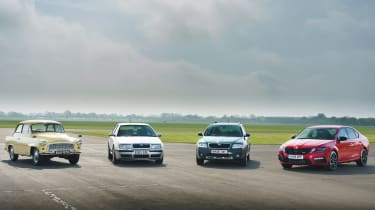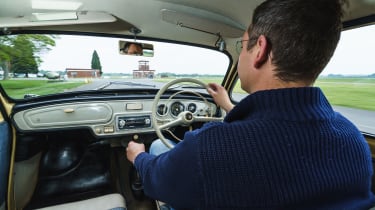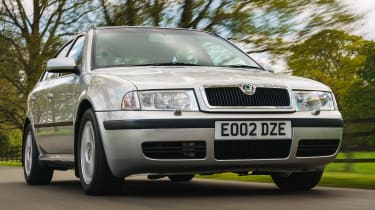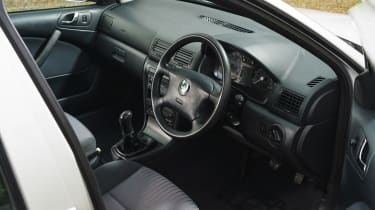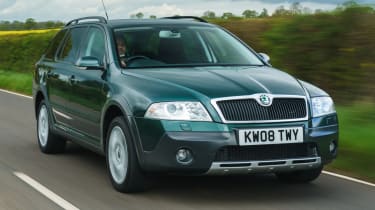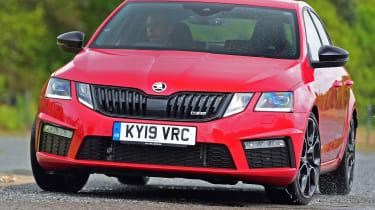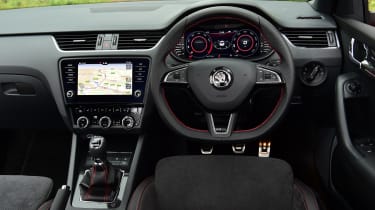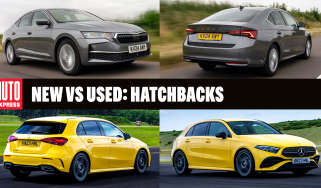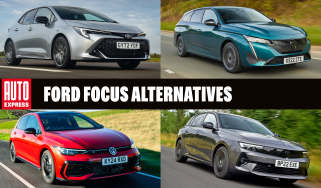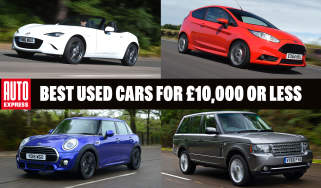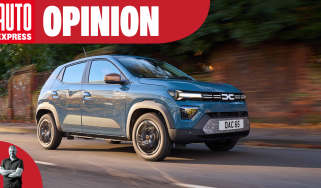60 years of Skoda Octavia - the car that defined a brand
As the Skoda Octavia hits its 60th birthday, we take a drive in all four generations to see how much has changed over the decades
If a week is a long time in politics, 60 years is a lifetime in the automotive industry. Yet that is how long the Skoda Octavia has been on our roads, with the original car emerging from Skoda’s Mladá Boleslav factory in what was then Czechoslovakia in 1959, and three subsequent generations arriving after Volkswagen bought the company back in the nineties.
The original Octavia got its name because it was the eighth model to come out of those factory gates after the Second World War. It was offered as a two-door saloon and a Kombi estate, going on to notch up 363,106 sales globally before production ended in 1971.
It would be another quarter of a century until the Octavia nameplate re-emerged, but when it did, it would be attached to a very important car.
Now to celebrate the 60th birthday of that badge, Skoda assembled all four generations of Octavia together at Bicester Heritage in Oxfordshire and invited us to sample the car’s development across the decades.
We start at the beginning, with a drive in a 1964 example of the original saloon. It’s a curious-looking thing that resembles a shrunken Hudson Hornet, but it’s by no means unappealing.
The horizontal door handles hinge on the left and pull out on the right, confusing everyone who goes to open the car, but once inside, the set-up is conventional enough.
Put the key in the ignition, push in the clutch, pull the starter knob, and the car’s 46bhp four-cylinder 1.2-litre engine comes smoothly into life. The gearlever is a standard floor-mounted stick, but with first gear up and to the right, and second down and opposite.
It’s immediately apparent that this Octavia is from a different era. The unassisted steering is heavy at low speeds, while an indicated 70mph (maximum speed is 74) on the dual carriageway brings pronounced engine noise, and the lack of an overdrive is keenly felt.
However, at 50mph on single-lane roads it starts to make sense. After all, the original Octavia launched in the same year that Britain’s first motorway opened, so most contemporary owners would have been chuntering along A and B roads at no more than 40 or 50mph, speeds at which the car is far happier.
Yes, the worm-and-nut steering has a couple of inches of play before your inputs result in any sort of change in direction, but the driving position is excellent and visibility could hardly be better; we could comfortably cover large distances in this car at this speed.
Aside from the name, though, does it have anything in common with the modern Octavia? Well, at £610, the first Octavia was cheaper than rivals like the Ford Cortina, plus it had a radio and heater, and could return 35mpg.
Then I get into the back and find that, despite my six-foot-two frame, I can sit behind the driver’s seat in relative comfort. Next, I open the boot and find an absolutely vast loadbay. In other words, what I’m sitting in here is an affordable, economical and practical family car that was also available as an estate. Sound familiar? Surely that’s the Octavia down to a tee, isn’t it?
Next, we head over to the reborn Octavia of 1996 (this is a 2002 example), known by Skoda as the first generation for simplicity’s sake. We’re immediately impressed. Its looks have aged well for starters, despite it being launched almost a quarter of a century ago. The interior is sombre, sure, but the dashtop feels soft, build quality passes modern muster, and it’s wearing its 136,000 miles well.
On the road, the controls are light, the ride comfortable, and progress is effortless. Sure, the handling is somewhat stodgy (Mk4 Golf underpinnings play their part here), but it feels safe, solid as a rock, and stands as a testament to the 1.4 billion Deutschmarks (over £1billion today) that VW invested in Skoda’s Mladá Boleslav factory in the nineties.
Speaking of money, when this version of the Octavia went on sale in the UK in 1998, you could put one on your drive for just £11,500, roughly £3,000 less than an equivalent Vauxhall Vectra or Ford Mondeo. Factor in the free servicing and the unlimited-mileage warranty Skoda offered for the first three years (a tactic Hyundai and Kia would later adapt), and putting badge snobbery to one side would have saved you a packet.
It’s no secret that the reborn Octavia was a hit with UK taxi drivers, but cabbies value practicality, affordability and reliability, so their endorsement was a ringing one. Plus being seen and sat in by so many passengers acted as free advertising for Skoda, and helped dismiss the previously poor reputation it held in the minds of the British public.
Buoyed by the success of the 1996 Octavia, which found more than 1.4 million homes during its eight-year life, the firm diversified with the second-generation model, renewing the hatchback, Estate and vRS models, and adding a Scout version to the line-up. With a ride height raised by 40mm, four-wheel drive and extended wheelarches, the Scout took aim at the ‘lifestyle’ buyers who were envisaged to spend as much time kayaking and cycling as they were commuting.
To drive, this model is much like the 1996 Octavia. The cabin is similarly functional but better built, and the driving experience is also very ‘Octavia’. Exciting? Not really, but it is certainly confidence-inspiring and solid.
And just as the 1996 Octavia benefitted from the Mk4 Golf’s PQ34 platform, so the second-generation Octavia got the sharper PQ35 chassis from the Mk5 Golf, demonstrating parent company Volkswagen’s mastery of platform-sharing.
We climb out of the Scout and come to the newest, most modern Octavia, the Mk3. Our chosen car is the Challenge vRS model, the pinnacle of the range. This has the same 242bhp 2.0-litre petrol engine and electronic limited-slip differential as the standard vRS, but adds a set of upgraded alloy wheels, as well as adaptive dampers, Alcantara seats and some subtle black styling tweaks.
It’s a quick car, too. 0-62mph takes just 6.6 seconds, while its maximum speed is limited to the performance-car default of 155mph. And just as the Mk2 Octavia has a stiffer chassis than the Mk1, so the Mk3 is stiffer than its predecessor, sitting on the ubiquitous MQB platform that underpins everything from the SEAT Tarraco to the Audi TT. That innate stiffness can be embellished by setting the adaptive dampers to Sport, helping the Challenge assert itself as a credible point-to-point weapon.
It’s not necessarily the best model to embody the Octavia as a whole, though, and taking a look at the entry-level, £18,315 Octavia S is more telling. While the 1996 Octavia seriously undercut its rivals on price, a base Octavia today actually costs £10 more than the cheapest Ford Focus and is only £590 cheaper than an entry-level Vauxhall Astra.
However, the Octavia remains far more spacious than other C-segment hatchbacks, so much so that it straddles the D segment, offering potential Vauxhall Insignia and Volkswagen Passat customers a better-value alternative.
Here’s where things get really interesting, though. Skoda’s recently launched Scala sits very firmly in the Focus-Golf-Astra C segment. Yet even in entry-level SE guise, the cheapest model in the range is actually more expensive than an Octavia S.
It’s fair to expect, then, that when the fourth-generation Octavia arrives towards the end of this year, Skoda will move it up (and price it) in the D segment. That leaves the Scala clearly as a proposition in the C segment and the company with an even broader line-up of models.
Today’s Octavia isn’t just an example of how to develop a car to a place where, 23 years on from selling it to cabbies, its maker can ask £30,000-plus for a hot hatch with adaptive dampers. Skoda’s image is also a million miles from its pre-VW reputation, and the Octavia has been key to that success.
‘Simply clever’ isn’t just a marketing ploy that refers to ice scrapers under fuel caps; it’s a blueprint for how to grow a business. And the Octavia, the most ‘Skoda’ of all Skodas, stands as a masterclass in how to build a brand.
If you enjoyed reading this then click here to read some more of our motoring related features...
Find a car with the experts

